A few weeks ago I tried this tea. It was brewed lightly, and the reuslt was ok, pleasant, not too offensive, but not too much to write home about.
I decided to try it again today, with a heavier hand.

Some of the same things remained. The most noticeable thing though, is that the odd smell coming from this tea — a bit of a slightly weird, perhaps fermenting smell, is very strong when brewed heavier. The way the leaves smell, the tea smells and tastes too. I don’t think it is a particularly good taste. I do think the taste will eventually fade, but right now, it is very strong.
The tea is medium bodied, with some sweetness, but still bitter for the most part. Rough, not too rough. It’s a bit like a younger version of yesterday’s tea, although with a bit better longevity and also a bit more sweetness later on, which yesterday’s tea sort of lacked. You can see the raw nature of the tea in later infusions, when it sort of returns to a more green cake state. The change in colour is noticeable, and the last infusion is sort of a golden yellow rather than a brown.
I’m not sure what to make of it. Perhaps this is just the smell of whatever storage facility it was in — and the storage smells a bit nasty? It seems to be the case, as the base tea seems quite ok, and underneath the smell I can detect some more floral notes. However, I do wonder why the tea behaves the way it does. I even wonder if it has been doctored a bit to appear more aged. I did comment last time that I don’t think this is a real Menghai. I did buy it mostly out of curiosity more than anything else. It will be interesting to see what happens to it… perhaps after a few months of airing out, it will change? Who knows.
The wet leaves look better than yesterday’s
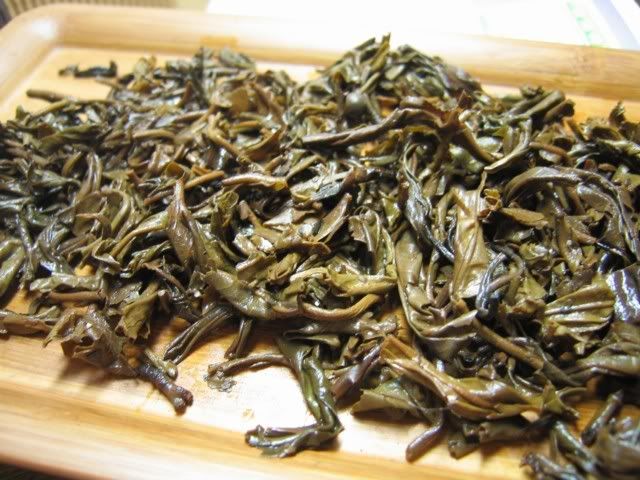
But some leaves are oddly shaped — look at the one on the left

I don’t think I’ve ever seen a leaf with that kind of shape before — with a round, big bottom and tapered ends. Usually they are thickest in the middle.
Odd.

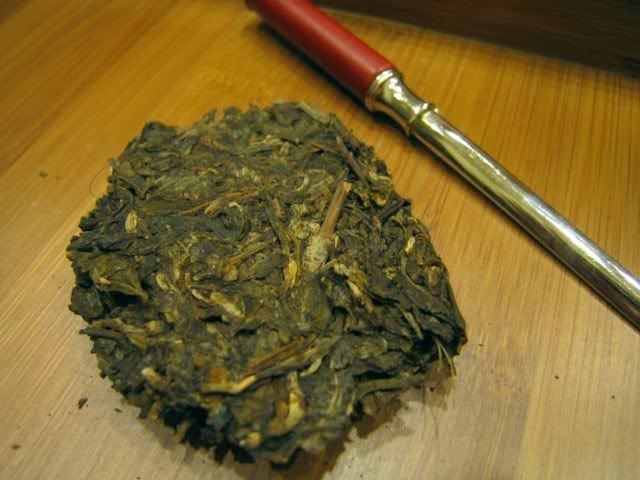
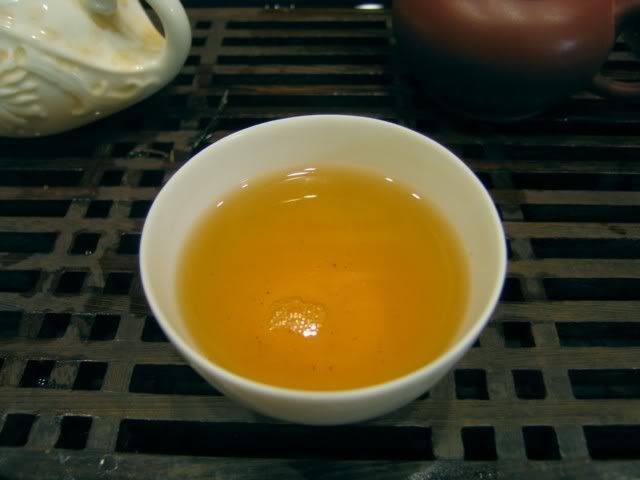




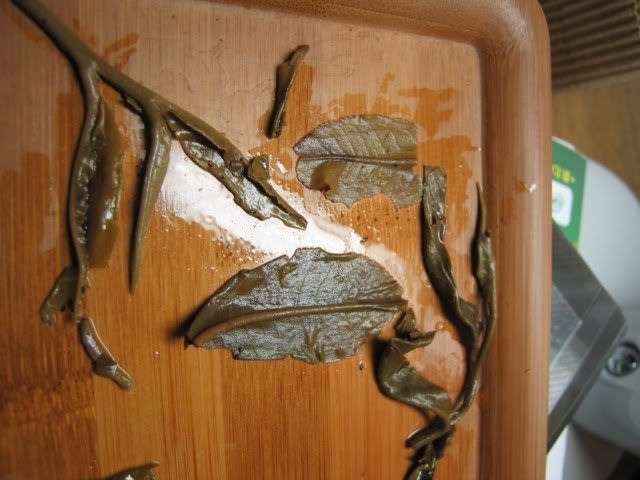
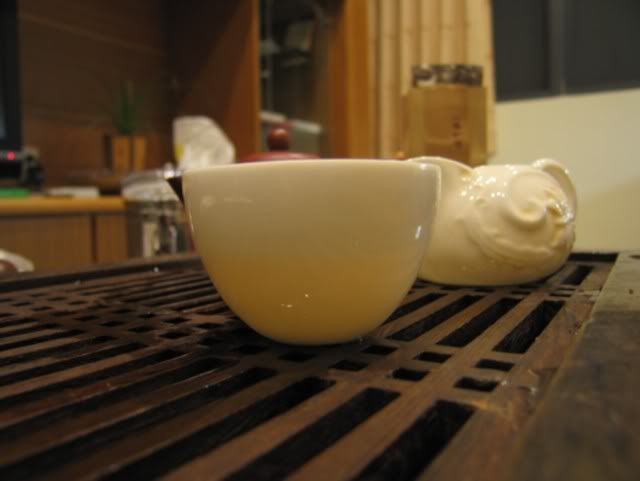
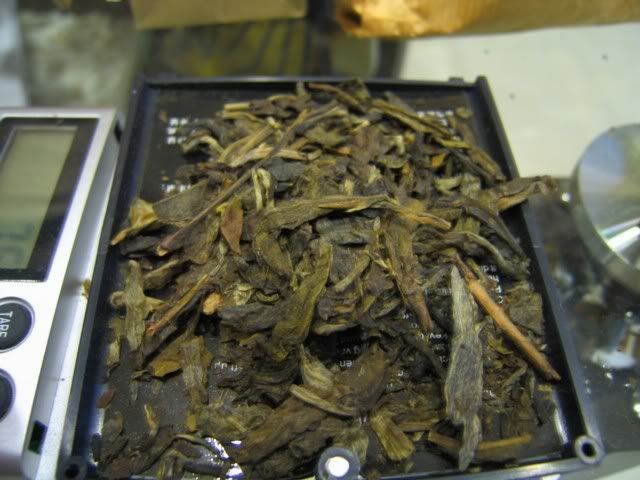


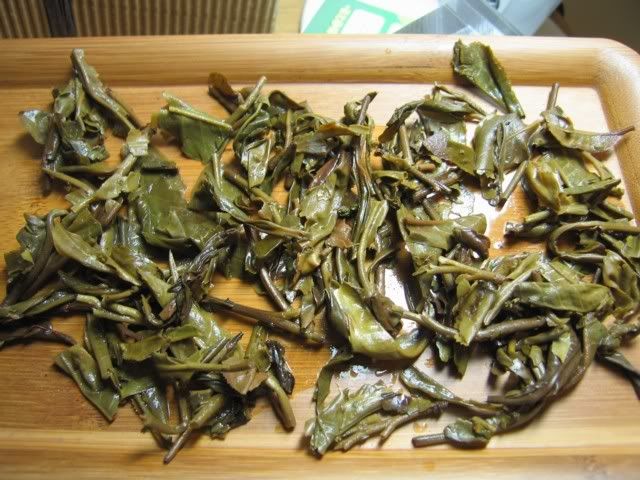
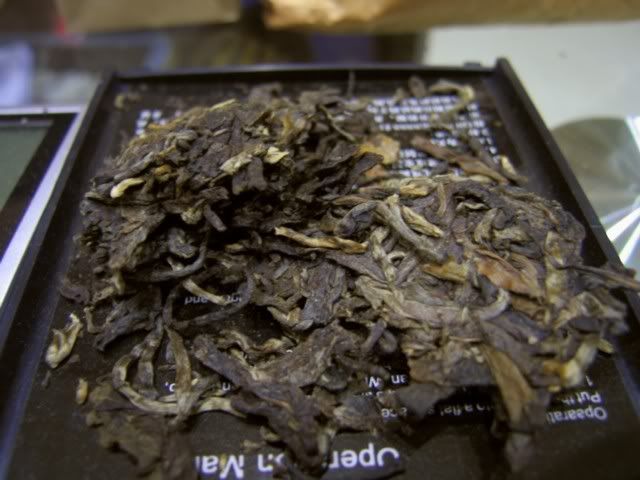
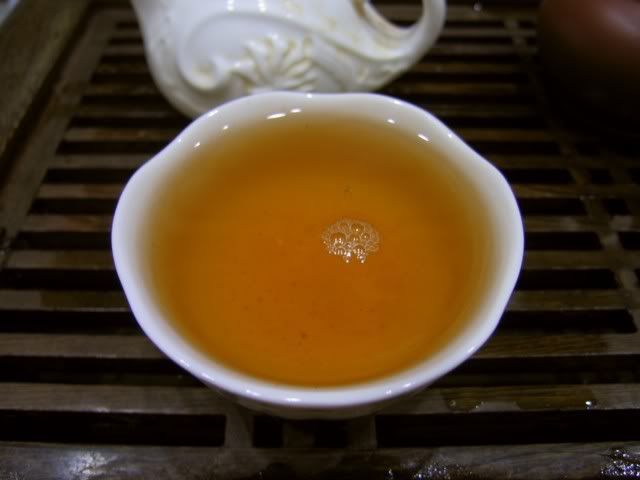
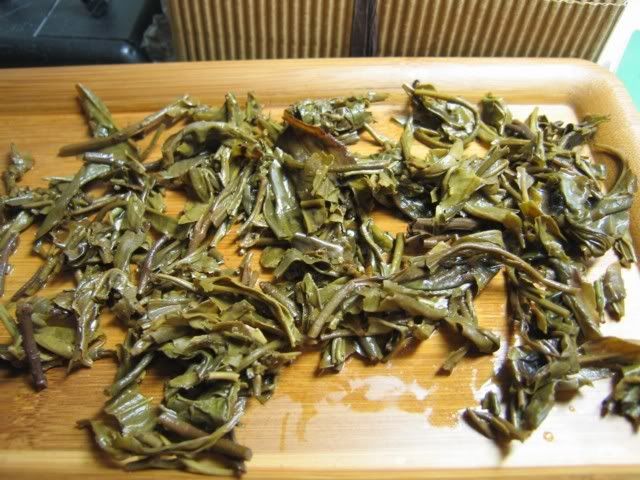
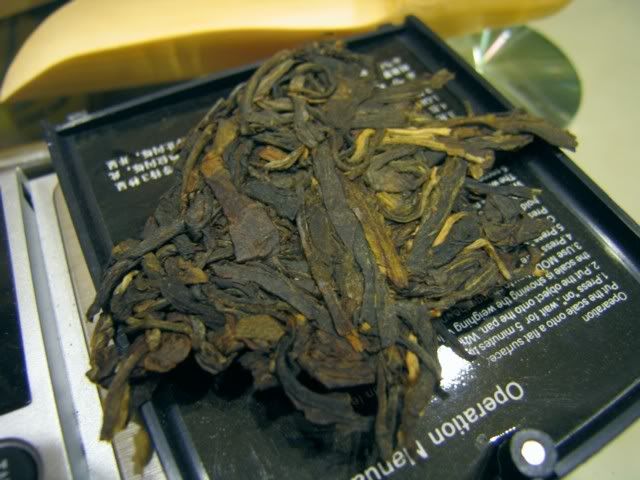
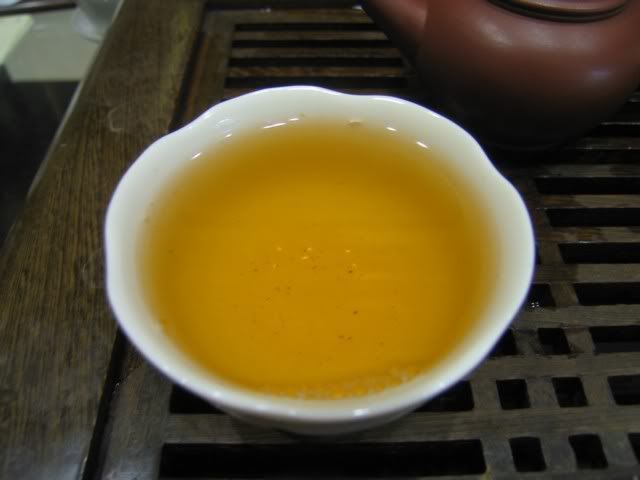
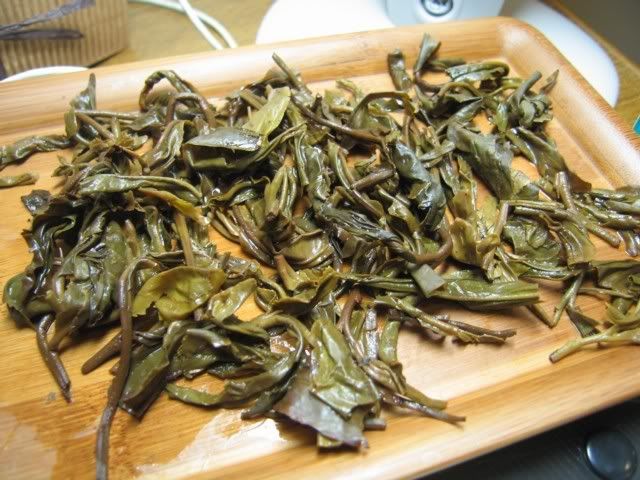
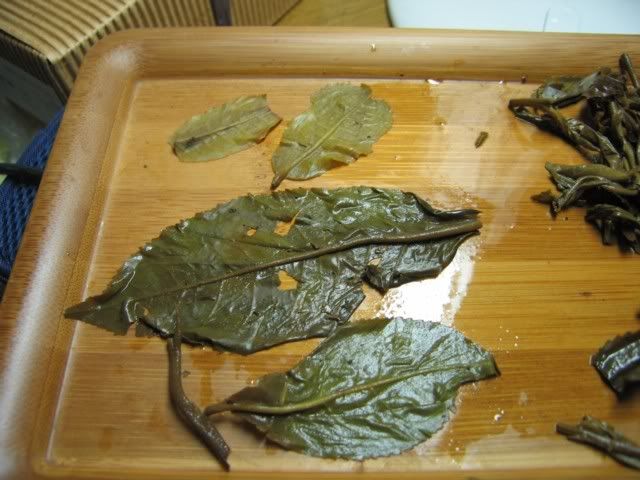
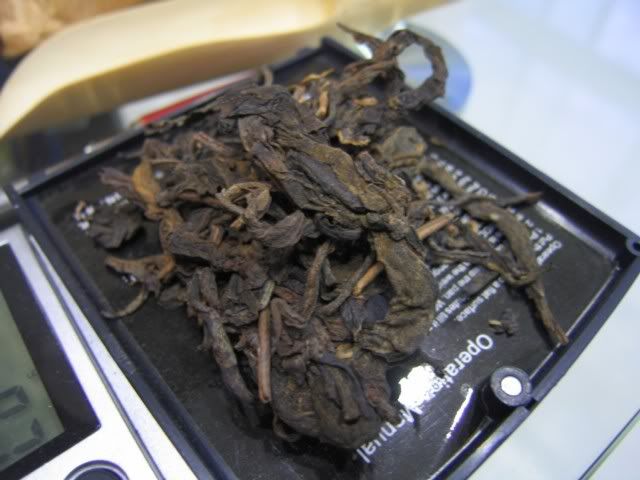
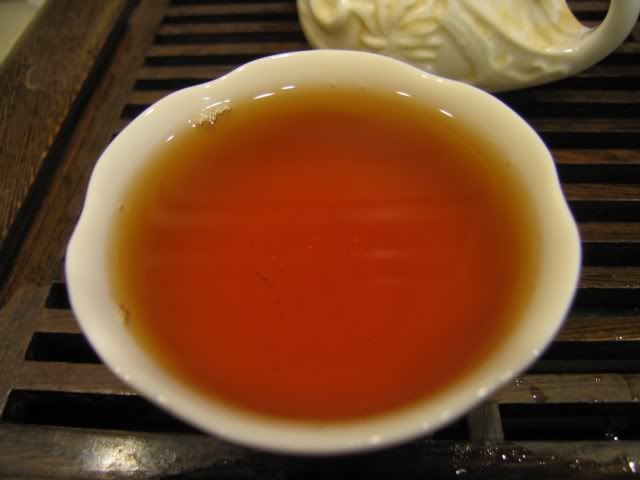
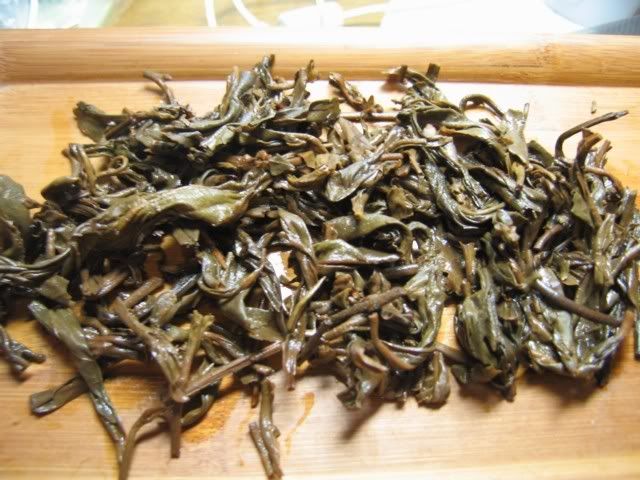
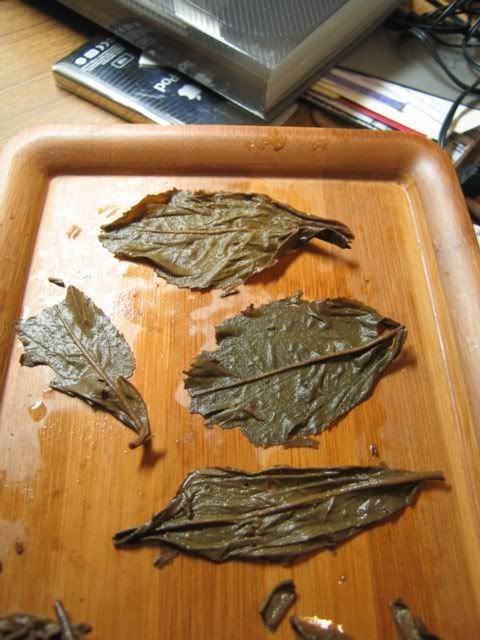

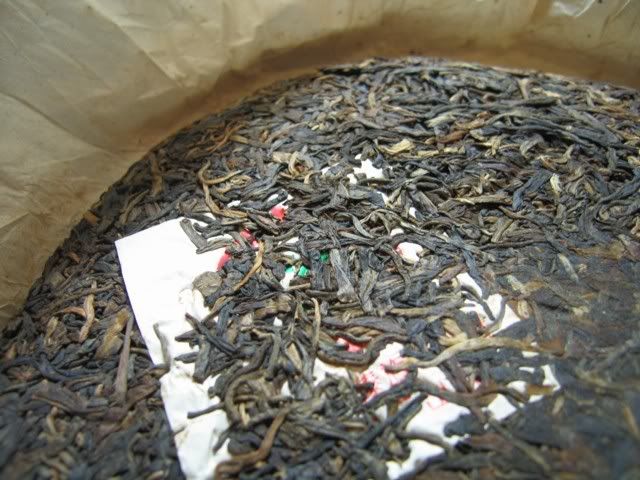
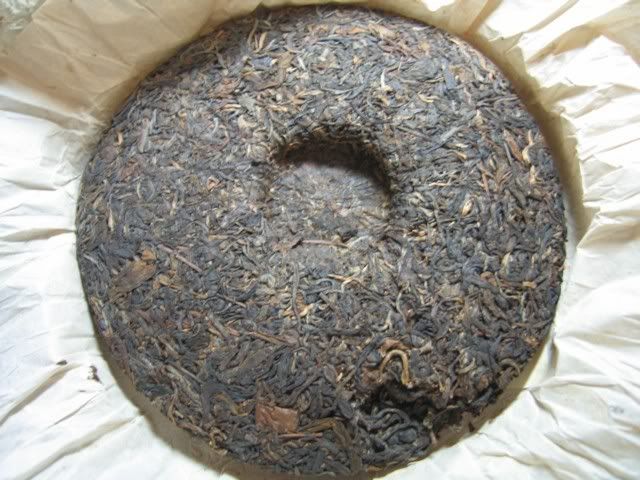

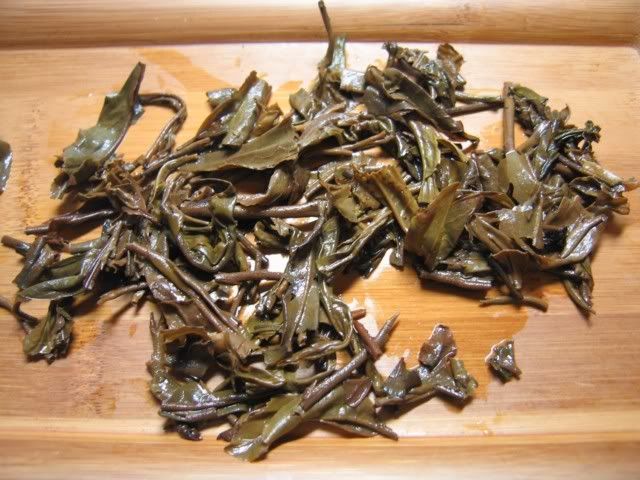
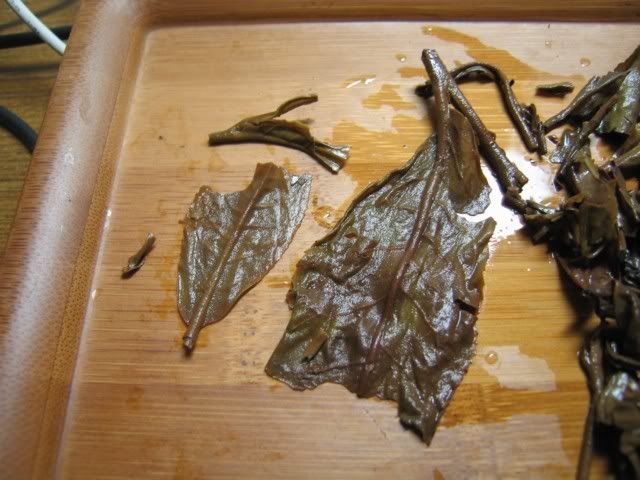




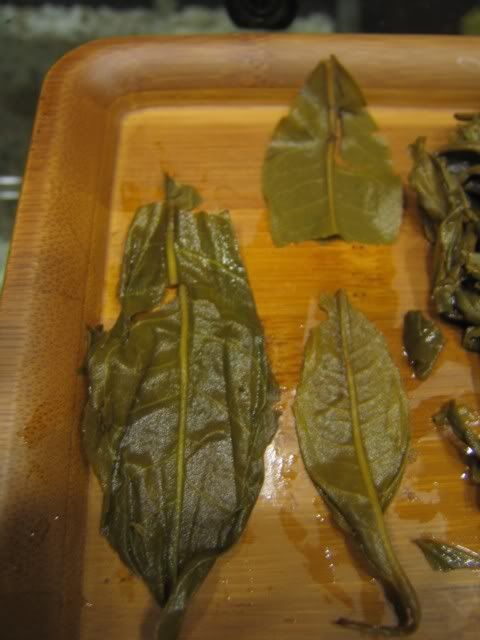
Well met observation, just wow. Using bad photos to guide purchases, people may end up buying teas they actually don't…